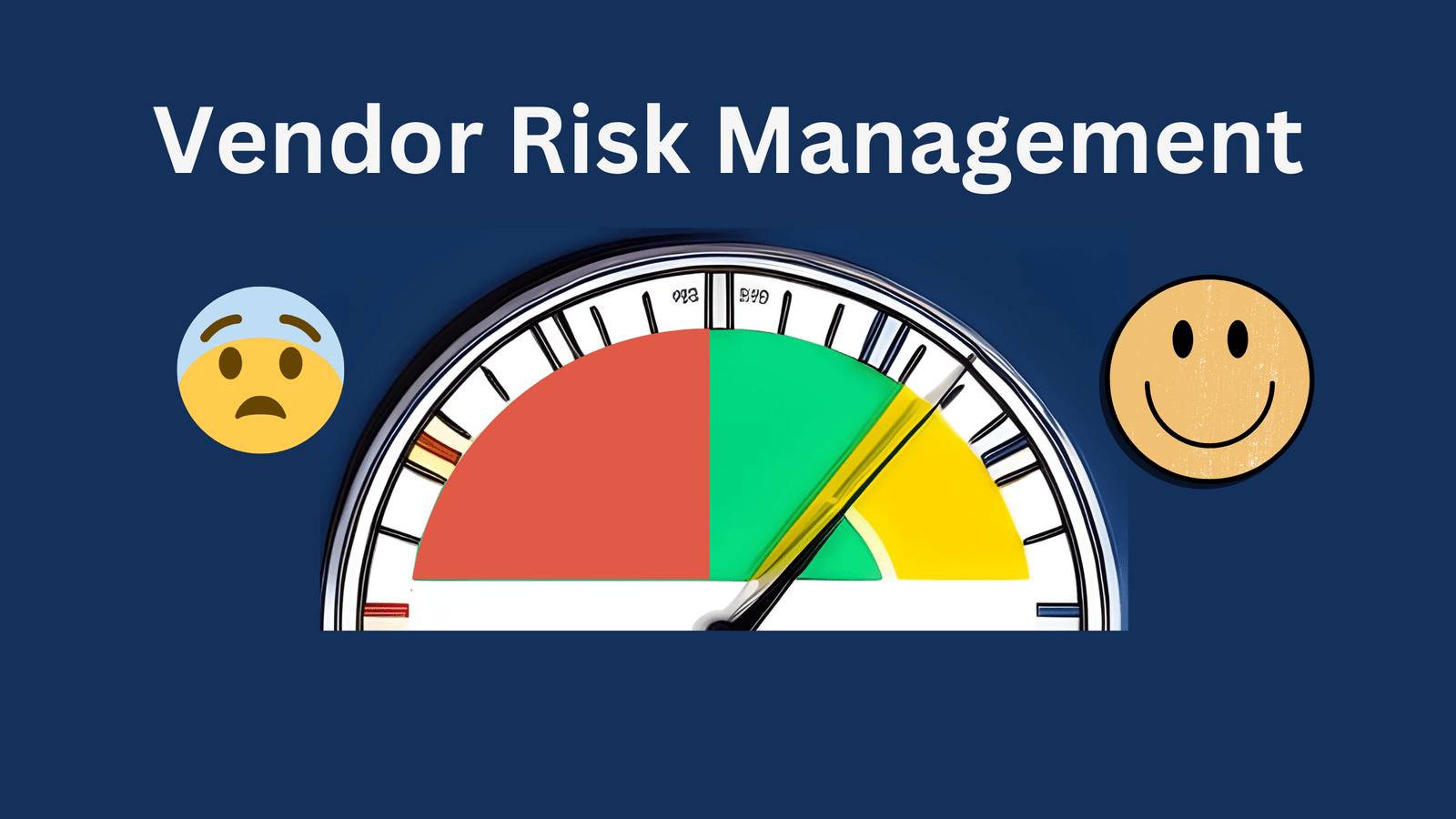In today’s interconnected world, businesses rely heavily on external vendors and partners to meet their operational needs. While this collaboration brings numerous benefits, it also exposes organizations to potential risks. One crucial aspect of safeguarding your business and data is effective vendor risk management. In this ultimate guide, we will explore the key steps and best practices to help you establish a robust vendor risk management program.
Understanding Vendor Risk Management
Vendor risk management involves assessing and mitigating the potential risks of engaging third-party vendors. These risks can range from data breaches and security vulnerabilities to regulatory non-compliance and reputational damage. By implementing a proactive vendor risk management strategy, organizations can minimize these risks and protect their assets.
Developing a Vendor Risk Management Framework
To establish an effective vendor risk management framework, consider the following steps:
- Vendor Selection: Thoroughly evaluate potential vendors before entering into any agreements. Assess their financial stability, reputation, security practices, and compliance with relevant regulations.
- Risk Assessment: Conduct a comprehensive risk assessment of your vendors. Identify the potential risks they pose, such as data breaches, service disruptions, or inadequate controls. This assessment should include factors like security controls, data protection measures, and business continuity plans.
- Due Diligence: Perform due diligence to gather relevant information about the vendor’s security posture. This may include reviewing their policies, procedures, and past security incidents, and conducting on-site visits if necessary.
- Contractual Agreements: Contractual risk management is a great way to manage vendor risk management. Develop contracts that clearly define the roles, responsibilities, and expectations regarding security and risk mitigation. Include provisions for regular audits, security assessments, incident reporting, and termination rights for non-compliance.
- Ongoing Monitoring: Regularly monitor your vendors’ performance and security practices. This can involve periodic assessments, security audits, and tracking of compliance with contractual obligations. Consider utilizing tools for continuous monitoring and automated risk assessments.
Key Considerations for Vendor Risk Mitigation
Vendor risk management is vital for protecting confidential information, mitigating security risks, ensuring regulatory compliance, maintaining business continuity, preserving reputation, reducing costs, and gaining a competitive advantage. By proactively managing vendor risks, businesses can foster a secure environment, safeguard their operations, and build trust with customers and stakeholders. When mitigating vendor risks, consider the following factors:
- Protection of Confidential Information: Engaging third-party vendors often requires sharing sensitive information and granting access to critical systems. Without proper vendor risk management, businesses risk exposing their confidential data to unauthorized access, breaches, or misuse. Implementing effective risk management practices ensures the protection of sensitive information, safeguarding business operations, and maintaining customer trust.
- Mitigation of Security Risks: Vendors may introduce security vulnerabilities or weaknesses into a company’s systems and infrastructure. A single compromised vendor can serve as a gateway for cyberattacks, leading to data breaches, financial losses, and reputational damage. Vendor risk management helps identify and mitigate these risks by assessing vendors’ security controls, verifying compliance with industry standards, and establishing protocols for incident response.
- Regulatory Compliance: Businesses operate within a complex regulatory landscape that requires adherence to various industry-specific and data protection regulations. Many regulatory frameworks hold organizations accountable for the actions and security practices of their vendors. By implementing vendor risk management practices, businesses can ensure their vendors comply with these regulations, reducing the risk of non-compliance penalties and legal consequences.
- Business Continuity: In today’s interconnected business environment, disruptions to vendor services can have severe consequences for operations. Vendor risk management involves assessing the business continuity plans of vendors to ensure they have measures in place to minimize service interruptions and maintain critical functions during incidents. By proactively managing vendor risks, businesses can reduce the likelihood of disruptions and maintain continuity in their operations.
- Reputational Protection: A vendor’s actions or security incidents can significantly impact a company’s reputation. Customers and stakeholders expect businesses to be diligent in selecting reliable and secure vendors. Inadequate vendor risk management can lead to publicized incidents, negative media attention, and loss of customer trust. By conducting thorough risk assessments, implementing security measures, and monitoring vendors, organizations can protect their reputations and maintain their brand image.
- Cost Reduction: Proactively managing vendor risks can save businesses from significant financial losses. The costs associated with security breaches, legal liabilities, regulatory fines, and reputational damage can be substantial. By identifying and addressing potential risks early on, organizations can prevent costly incidents, minimize financial losses, and allocate resources more efficiently.
- Competitive Advantage: Implementing robust vendor risk management practices can serve as a competitive differentiator. Customers and partners value organizations that prioritize data security, regulatory compliance, and risk mitigation. Demonstrating a strong vendor risk management program can help businesses win new contracts, attract partners, and enhance their brand reputation.
Collaboration and Communication
Effective vendor risk management requires collaboration and open communication. Foster a strong relationship with your vendors, based on trust and shared goals. Regularly communicate your expectations regarding security and risk management and encourage them to provide transparent insights into their practices.
Emerging Technologies and Continuous Improvement
Stay updated with emerging technologies and trends in vendor risk management. Leverage tools and solutions that offer automation, advanced analytics, and real-time monitoring capabilities. Regularly review and improve your vendor risk management program to adapt to evolving risks and regulatory requirements.
Conclusion
Vendor risk management is a critical aspect of protecting your business and data from potential vulnerabilities and threats. You can effectively manage vendor risks by following a structured framework, conducting thorough risk assessments, and implementing robust mitigation strategies. Remember, successful vendor risk management requires ongoing monitoring, collaboration, and continuous improvement. By prioritizing this aspect of your business, you can minimize the impact of potential risks and maintain a secure environment for your organization.




Leave a Reply